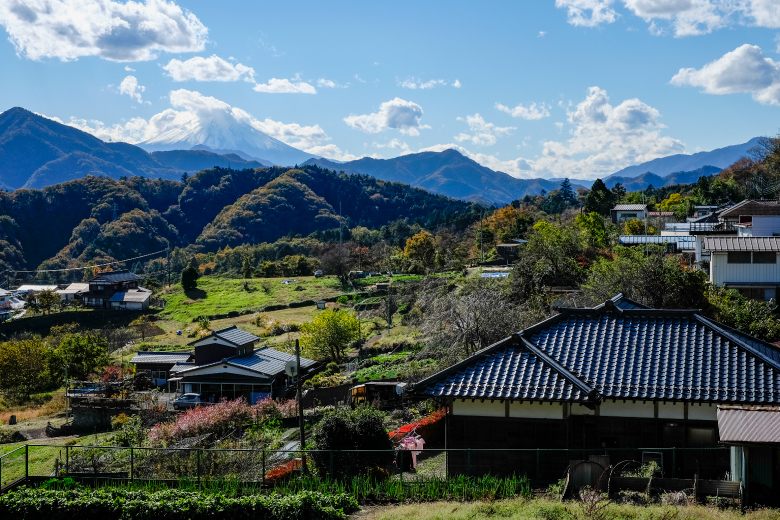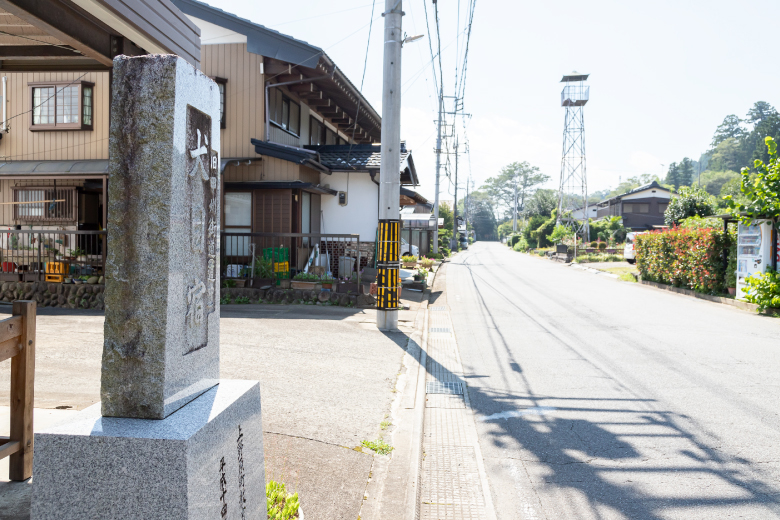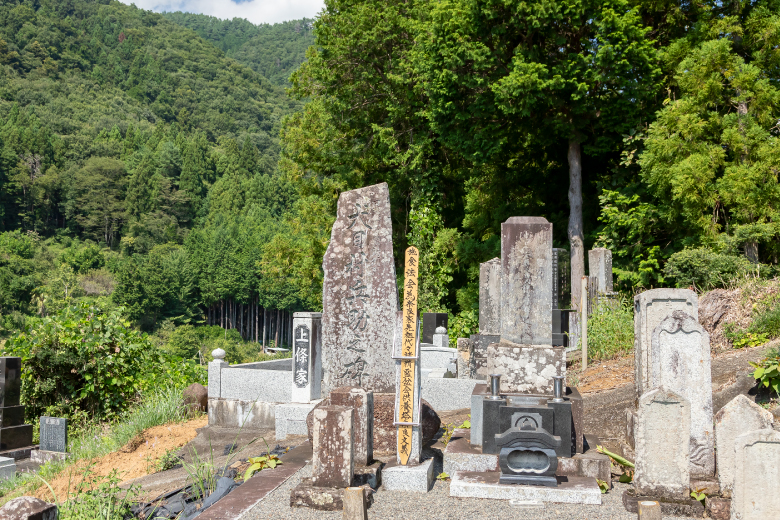Inume-shuku was the next station on the road to Notajiri-juku when traveling from Edo. It was located at the highest point in the Gunnai Region. Inume Pass near this post station offers a grand view of beautiful Mount Fuji, and is included as a vantage point in Katsushika Hokusai’s Thirty-six Views of Mount Fuji as well as Utagawa Hiroshige’s Thirty-six Views of Mount Fuji.
Inume-shuku was established in an unpopular area in 1713. The settlement was originally situated 700 m to the south of its current location. Inushima-jinja Shrine and Hosho-ji temple situated on the west side of the street of inns protected against attack from the west, serving as a strategic structure protecting Edo. The street along which the inns stood is approx. 300 m long. While the majority of the inns were unfortunately destroyed by fire in 1970, the atmosphere of the post station remains in the townscape.
This post station was the hometown of Inume Heisuke, who led the Koshu Uprising in 1836. In the middle of the town, there is a sign that shows the site of the house where he was born. In addition, the grave of Inume Heisuke is located on a hill in the eastern part of the town.
Inume-shuku was established in an unpopular area in 1713. The settlement was originally situated 700 m to the south of its current location. Inushima-jinja Shrine and Hosho-ji temple situated on the west side of the street of inns protected against attack from the west, serving as a strategic structure protecting Edo. The street along which the inns stood is approx. 300 m long. While the majority of the inns were unfortunately destroyed by fire in 1970, the atmosphere of the post station remains in the townscape.
This post station was the hometown of Inume Heisuke, who led the Koshu Uprising in 1836. In the middle of the town, there is a sign that shows the site of the house where he was born. In addition, the grave of Inume Heisuke is located on a hill in the eastern part of the town.


